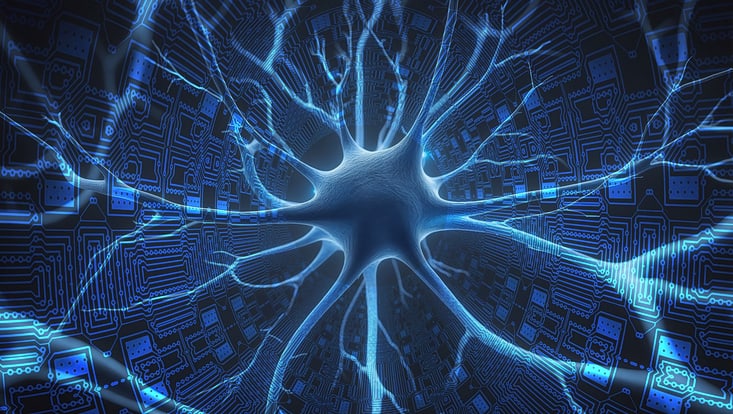Interfacing with the Human Brain
17 April 2025

Photo: Pixabay/Gerd Altmann
Nanomaterials could play an important role in interfaces between the human brain and computers, numerous researchers – including several who are involved in PIER PLUS projects – have shown in a recent multidisciplinary review article.
Prof. Dr Wolfgang Parak an overview article on the state of research in the field of brain-machine interfaces (BMI) in the journal ACS Nano. Several authors are also active in the PIER PLUS Profile New Materials (link).
Machines that replace parts of the human brain or expand its capabilities: This scenario has long been a topic in science fiction, and US tech billionaires have also discovered the field for themselves. “Of course I'm familiar with these scenarios, but it's all very far-fetched – there is no sign of us being able to simply connect a human brain to a computer in the near future,” emphasizes Prof. Dr. Wolfgang Parak vom Fachbereich Physik der Universität Hamburg. from the Department of Physics at the University of Hamburg. Together with colleagues from numerous universities, including the University of Hamburg (Faculty of Mathematics, Informatics and Natural Sciences and Faculty of Medicine) and the Hamburg University of Technology, he recently published an overview article on the state of research in the field of brain-machine interfaces (BMI) in the journal ACS Nano. Several authors are also active in the PIER PLUS Profile New Materials.
The Role of Nanostructures
Specifically, the researchers looked at the role that nanotechnologies could play in BMI: “Nanomaterials open up the possibility of direct interfaces to individual brain cells due to their size, which is roughly equivalent to that of biomolecules,” says Wolfgang Parak. Nanoparticles could be used to transmit electrical signals directly. However, there is still a long way to go, as the work of research groups from all over the world shows, for example in the field of neuroprostheses that restore lost or impaired neuronal functions: On the one hand, the high integration density of electrodes for precise and effective stimulation is an ongoing field of research – the focus here lies in particular on advanced nanofabrication techniques. The materials used must also be biocompatible, they must not cause a rejection reaction in the body and they must function reliably over long periods of time. “Neuroprostheses must be able to both send and receive signals, which also poses challenges for electronics and signal processing, especially as we are talking about the nanoscale here,” explains Wolfgang Parak.
Among other things, researchers are working with organoids, i.e. biological brain models from the laboratory. However, the link to medicine is not the only one, as the multidisciplinary article points out: “In addition to physics, materials science, medicine and several technical subjects, there are also large overlaps with the social sciences, the humanities and the law,” emphasizes Wolfgang Parak. Legal and ethical issues in particular have not been fully clarified with regard to the specific application; clear guidelines are needed here, because research is already carried out on BMI, as Parak emphasises: “Ideally, this research takes place under very clear legal and ethical conditions.”
Multidisciplinarity
Combining diverse approaches in successful research is also a focus of PIER PLUS. The current paper on brain-machine interfaces is an example of this: numerous colleagues working in PIER PLUS profiles in Hamburg contributed to it. “During the collaboration, we also realized that our scientific languages are quite different – engineers view the brain in a similar way to a computer processor and use the corresponding vocabulary, while medical scientists have a different approach,” says Wolfgang Parak. Multidisciplinarity also creates mutual understanding. “The enormous complexity of the human brain is still a major challenge for BMI technologies and nanotechnology alone will not solve all the associated problems. However, it already offers materials and platforms that can help to develop suitable interfaces – pursuing this line of research is certainly worthwhile.”
